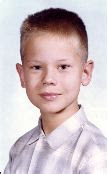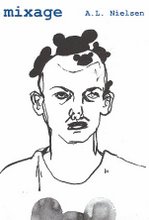Last year I was contacted by the author of this new biography of Gil Scott-Heron, who was then working on the project and wanted to talk to me about Scott-Heron's time as a professor at Federal City College. I'd been eagerly awaiting the publication of the book ever since, as it promised to be the first full exploration of the life of a seminal figure of late twentieth-century popular culture. The book slipped out without much fanfare. I only knew it was published when somebody posted the link to an excerpt on FaceBook.
Bottom line: This is a mostly good starting point for readers new to the territory, but, as is usually the case with biographies published shortly after the death of the subject, we'll need a still fuller accounting.
"Mostly good"?
Well, given that we just learned of the death of former D.C. Mayor Marion Barry, here's a good place to start. On page 244 we read of Barry's being "captured on national television smoking crack in a hotel room with some prostitutes in January 1990." The writing itself is one issue. This wasn't "captured on national television," though the surveillance video captured in that hotel room was subsequently aired everywhere. But that's just the thing. Anybody who's seen that video will see immediately what's wrong with this account. Just as anyone who has ever heard Wayne Shorter will know that the jazz artist in whose living room Gil married Brenda Sykes is not a trumpet player (his brother, Alan, is).
Some of the errors are just proofreading slips, Howard University's radio station is misidentified as WHUV on one page, but is cited correctly on another. Writers David Rigsbee and David Grigsby get mixed up with one another on page 84. The Robert Blake movie Gil and I discussed in class is not titled Electric Glide in Blue. Some of the factual errors are truly odd. Parliament was not a local D.C. band, though god knows we loved us some Parliament/Funkadelic in D.C. Stevie Wonder was not older than Gil. (Wonder and I, as it happens, are the same age. Gil was born the previous year.) "Whitey on the Moon" is not a "prose poem."
But these errors add up. There's a crescendo of bollixed literary history on page 41. Calvin Hernton becomes Calvin Hunter. Tchicaya U Tam'si (originally styled Gérald-Félix Tchicaya) becomes Felix T'caya U'Tansy. The early poet Jupiter Hammon becomes Jupiter Jones.We read that J. Saunders Redding "was also part of the Harlem Renaissance," which is more than a stretch. (Further on the same page we learn of the "rabble sessions" Gil participated in with his fellow Lincoln students. Guess Gil was the god father of "rabble."
It's generally not a good sign when a biographer misquotes the work of the subject of the biography, as happens when we read the line Gil Scott-Heron attributed to his ninth grade English teacher in the great "Must Be Deep" monologue. It's not hard to get this line right, as it is repeated in several recordings. But this biography even misquotes me, despite the fact that I provided the author with a copy of my work-in-progress. My own narratives, supplied directly to the author, get altered in significant and inexplicable ways.
So Gil Scott-Heron: Pieces of a Man has to be recommended with serious cautions, but I recommend it all the same. You should first read Scott-Heron's own posthumously published memoir, The Last Holiday. It is a book that will break your heart while taking you back to a very recent period of our history that is not at all as well known as you might think. Then read this new book, in part to learn of the things that Scott-Heron couldn't bring himself to relate in his own book (or at least in the version made available to us by his editors after his death). The new book gives a much clearer account of the falling apart of the Gil Scott-Heron - Brian Jackson song writing team. It provides a better understanding of Gil's marriage to Brenda Sykes, and of the relationships to the mothers of his other children. And the book ends as heart-breakingly as Scott-Heron's own book, detailing the sad rivalries among the artist's heirs.
Most important, though, the book takes readers back to the thing that excited us about Gil Scott-Heron in the first place, the thing that survives beyond the artist's life, that survived his own abuse of his talents and promises: the music. I read through this book with earphones clamped to my head, listening in order to the songs I was reading about. And then I watched video of Gil performing at his peak. This is a life, and a book, that survives its errors and flaws.
Tuesday, November 25, 2014
Subscribe to:
Post Comments (Atom)























No comments:
Post a Comment